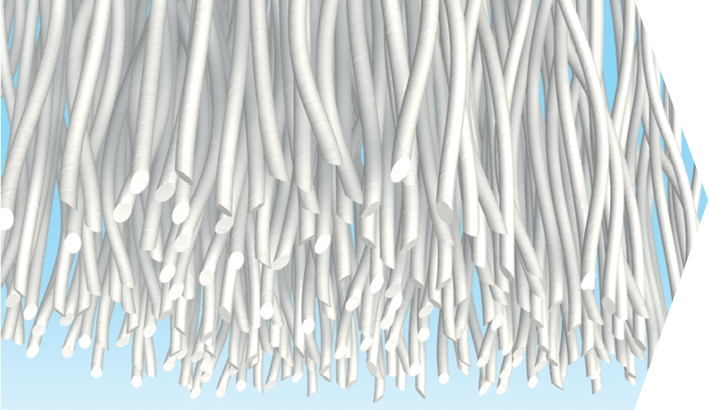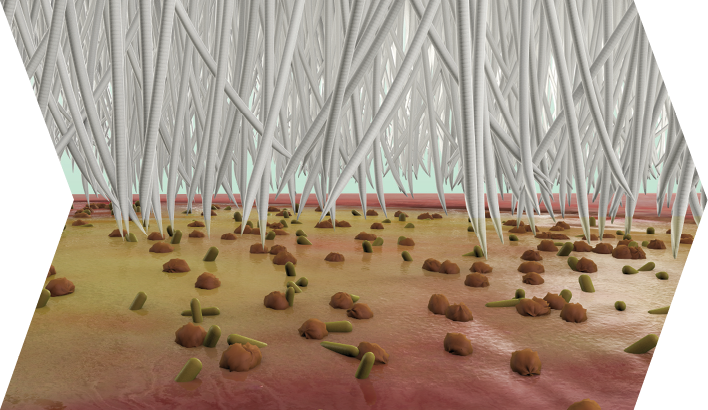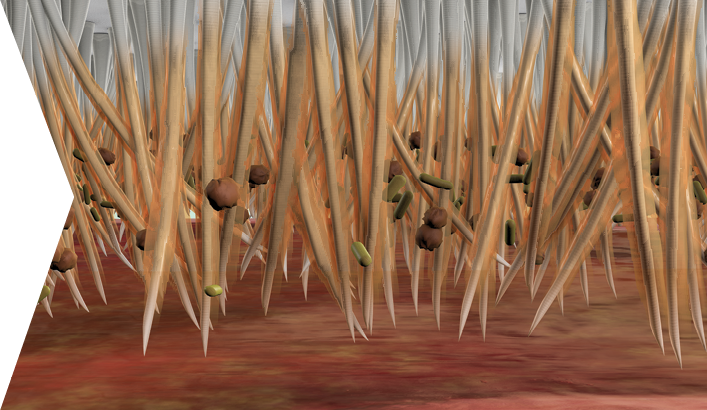What is Debrisoft®?
Debrisoft products are unique, safe, highly effective debridement products that significantly improve wound bed preparation for acute and chronic wounds.
Debrisoft Pads are ideal for cleansing wound surfaces and removing hyperkeratotic or dry skin, while Debrisoft Lolly safely reaches deep, undermined, or tunneling areas where alternative debridement methods may be impractical.
Indications
Debrisoft is recommended for cleansing of both superficial acute and chronic wounds, including but not limited to:
- Leg ulcers
- Diabetic ulcers
- Pressure injuries
- Burns, including 3rd degree burns after surgical debridement
- Traumatic and surgical wounds (e.g.: abrasions, incisions, lacerations)
- Debrisoft is also highly effective for the removal of hyperkeratotic tissue, including lymphedema associated keratosis, dry skin and seborrheic plaques.

How does Debrisoft work?
Lorem ipsum dolor sit amet
Debrisoft’s award winning technology, the monofilament fibers, reach into the wound bed or periwound skin and loosen debris and non-viable tissue gently through circular motion. Due to the high density of monofilament fiber composite, debris and non-viable tissue are lifted, bound and safely removed, while providing a virtually painless experience for the patient.

The fiber composite material of Debrisoft consists of 100% knitted monofilament polyester fibers.

Beveled fiber tips loosens debris effectively while protecting newly formed granulation tissue and epithelial cells.

Fiber composite lifts, binds, and removes slough and debris, including biofilm.
When should you use Debrisoft?
Every time.
The T.I.M.E concept for wound bed preparation, introduced in 2002, is still one of the most popular concepts guiding clinicians to identify and breakdown local barriers to wound healing.
The 4 steps of successful wound bed preparation according to T.I.M.E. are:
- Tissue Management
- Inflammation or Infection Control
- Moisture balance
- Edge epithelial advancement
These steps need to be addressed systematically so wound healing can take place.
Enabling a clean wound bed, by gently removing devitalized cell debris, reducing potentially harming bacteria and biofilm in the wound bed and periwound skin and the time-saving cleansing of edges and periwound skin are only a couple o f the Debrisoft benefits.
